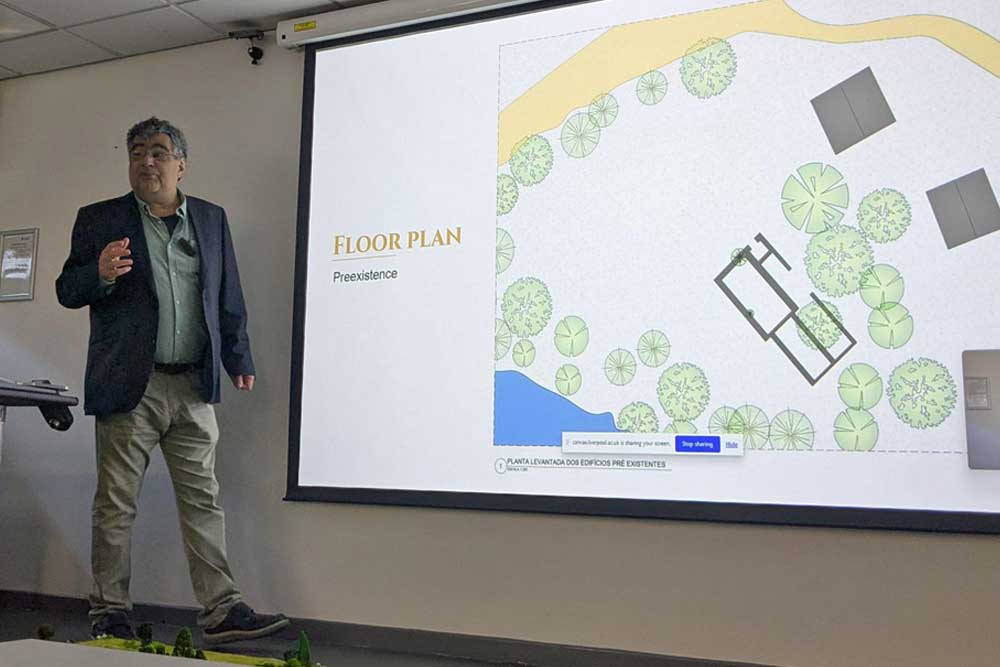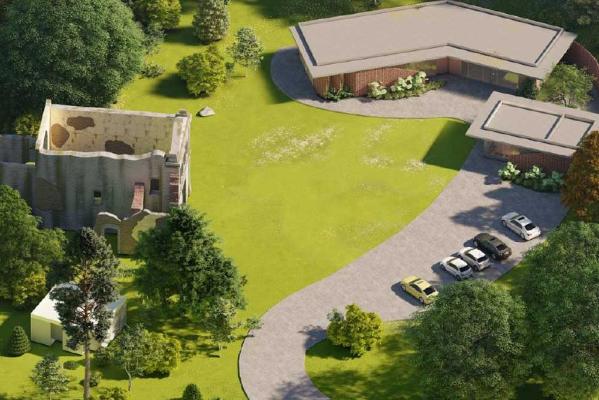
Students in the Year 3 RE-heritage design studio (which focuses on adaptive reuse of built heritage) gained first-hand insight into a major restoration initiative during a lecture on 7 November by visiting scholar Professor Wolney Unes.
Professor Unes coordinates the revitalization of the Ruins of São José da Boa Morte in Cachoeiras de Macacu, Brazil. He presented the project as a contemporary model for balancing conservation, sustainability, and community impact.

Ruins of São José da Boa Morte, showing the observation deck.
Professor Unes outlined how the site, a listed heritage site since 1989, is being restored under the leadership of Elysium Sociedade Cultural, in partnership with the local Municipality and sponsored by Nova Transportadora do Sudeste (NTS). He highlighted the extensive studies and technical surveys conducted before construction work began earlier this year. This is an essential approach for a location with strong archaeological potential. Project architect Jéssica Marques noted that even establishing the construction site demanded careful mapping of sensitive areas to avoid disturbing historic remains.
A key feature discussed was the self-supporting observation deck, crafted from metal and corten steel, which offers new views of the former church without physically touching the original walls. Engineer Pedro Carim wanted the design to reflect the core principles of heritage restoration: lightness, safety, and reversibility, allowing visitors to engage fully while simultaneously protecting its integrity.
Professor Unes also emphasized the project’s broader social dimension. Alongside structural consolidation and installation of new visitor infrastructure, the initiative created a community and craft centre to host workshops and skills training for local residents. “Our aim is to reactivate this heritage as a living part of the community, strengthening collective memory and expanding opportunities for education and engagement,” he told students.

An aerial view of the site showing the community and craft centre.
Supported through the Federal Endowment for Culture, the project aligns with NTS’s commitment to fostering sustainable development and safeguarding cultural assets across the regions where it operates.
More information can be found here: https://ruinasdemacacu.elysium.org.br
An exciting outcome of this lecture was that Professor Unes announced two potential internships for University of Liverpool Students at the site and his home institution at Goiânia. For more information, please email heritage@liverpool.ac.uk and we will connect any interested students.